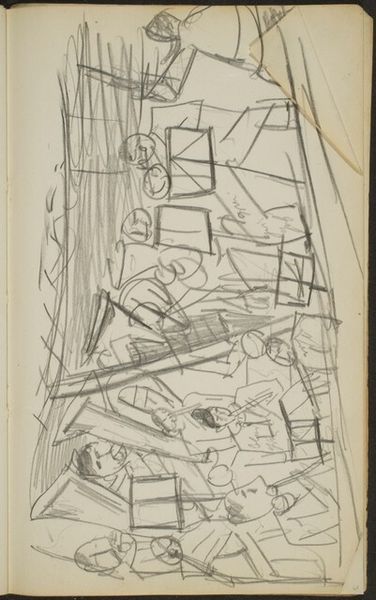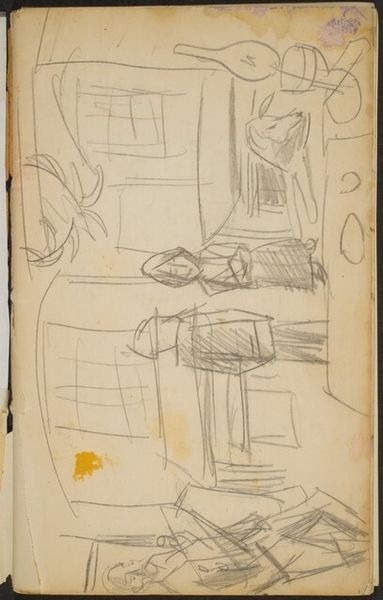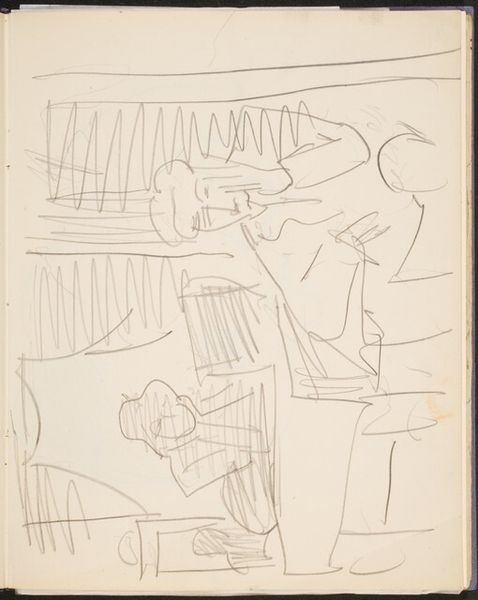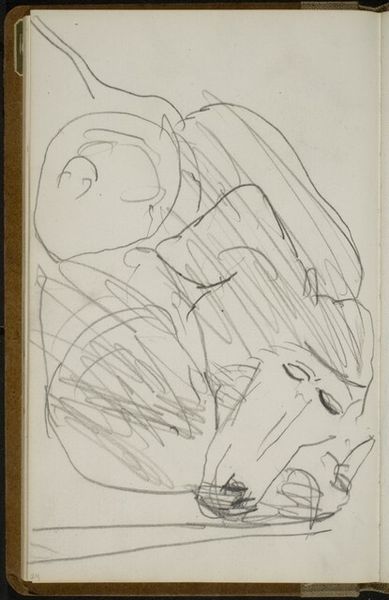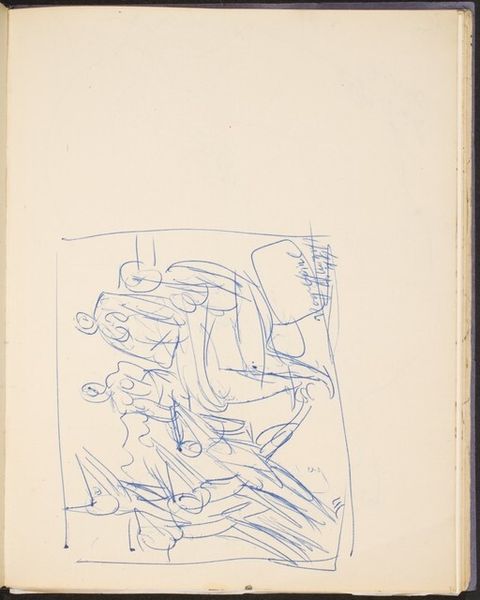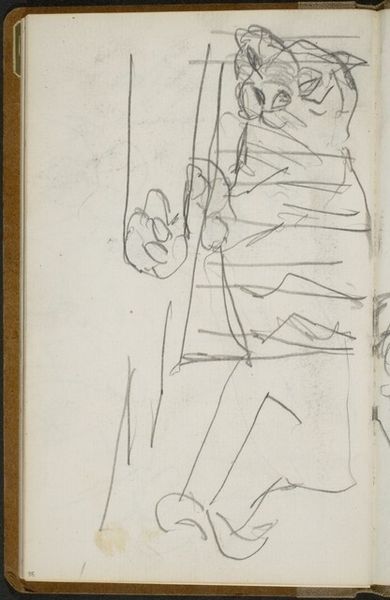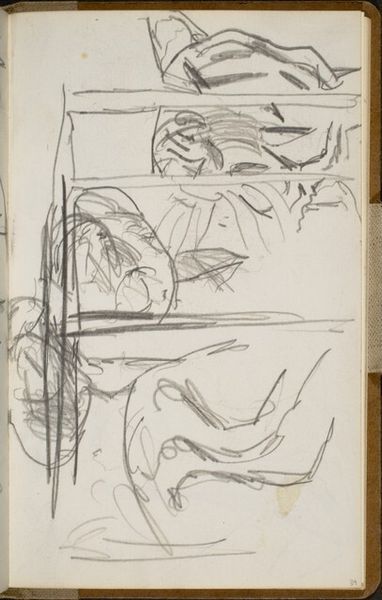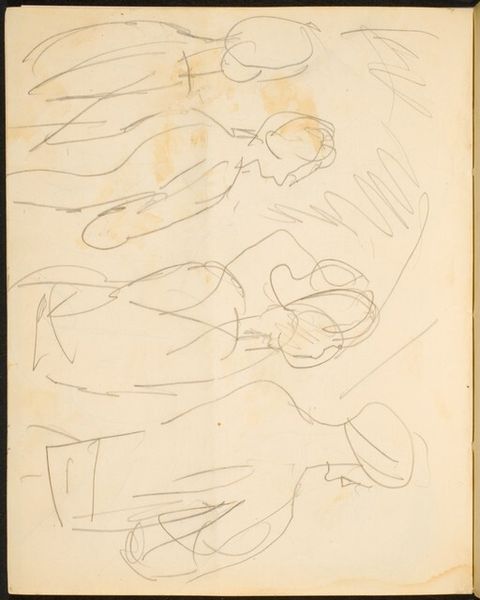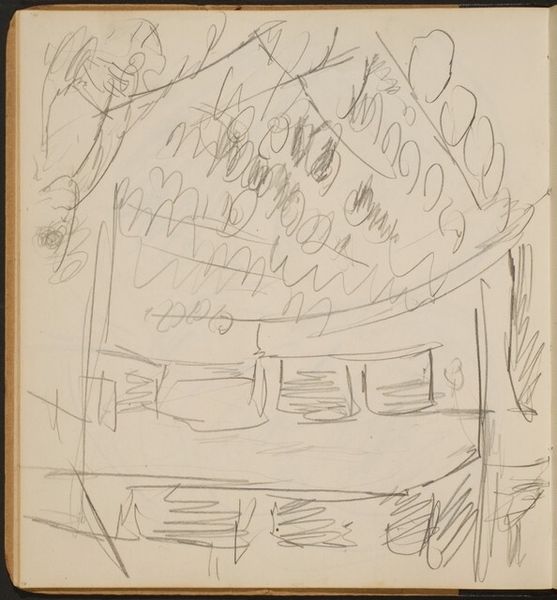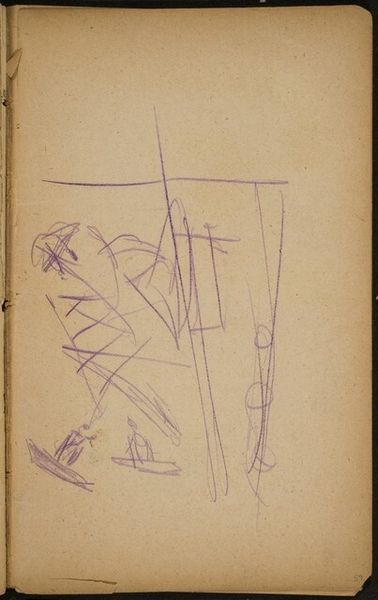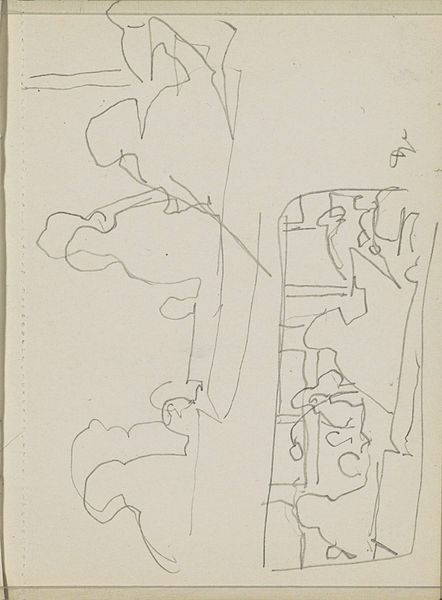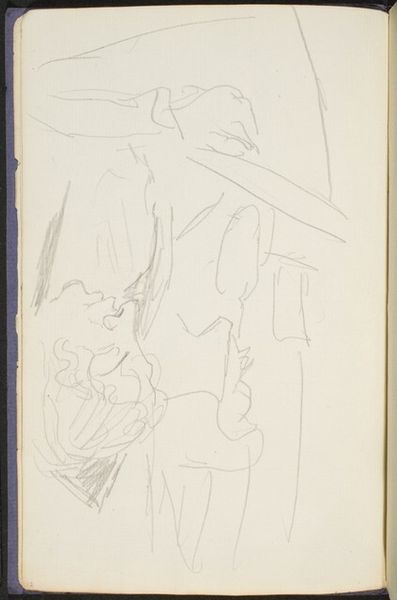![Zuschauer (Spectators) [p. 37] by Max Beckmann](/_next/image?url=https%3A%2F%2Fd2w8kbdekdi1gv.cloudfront.net%2FeyJidWNrZXQiOiAiYXJ0ZXJhLWltYWdlcy1idWNrZXQiLCAia2V5IjogImFydHdvcmtzL2U0ZjllZjRlLTg5NmEtNDQ3Yi05ZDc0LWJhNTc1NTkyYzBkNC9lNGY5ZWY0ZS04OTZhLTQ0N2ItOWQ3NC1iYTU3NTU5MmMwZDRfZnVsbC5qcGciLCAiZWRpdHMiOiB7InJlc2l6ZSI6IHsid2lkdGgiOiAxOTIwLCAiaGVpZ2h0IjogMTkyMCwgImZpdCI6ICJpbnNpZGUifX19&w=828&q=75)
drawing, pencil
#
portrait
#
drawing
#
figuration
#
pencil
Dimensions: overall: 16.7 x 10.3 cm (6 9/16 x 4 1/16 in.)
Copyright: National Gallery of Art: CC0 1.0
Curator: Let's discuss "Zuschauer (Spectators)," found on page 37 of a sketchbook by Max Beckmann. It’s a pencil drawing with several figures. What’s your initial response? Editor: Disquieting. The lines are agitated and fragmented. There's a sense of voyeurism, almost an unsettling unease watching figures who are themselves watching. Curator: Yes, and consider the power dynamics at play. The term "spectator" itself implicates social roles and hierarchies. Who has the privilege to observe, and who is being observed? What position does the artist—and by extension, the viewer—occupy in this dynamic? Editor: The rapid, almost frenzied strokes also suggest instability. Do you think he means this symbolically or practically? Could he have simply sketched these in the streets, for example, while on the go? Curator: The spontaneity lends authenticity but within Beckmann’s broader themes, one must analyze beyond the immediate setting. Remember, many of his works grapple with the turmoil and anxieties of the Weimar Republic. How might this informal depiction of spectators reflect anxieties about public space, political engagement, or the rise of mass culture? Editor: Looking closely at the forms, many of the lines come together as circular masses that end abruptly. It gives one the sensation that those being seen or those in proximity do not wish to stay put. Perhaps this evokes a memory of people leaving a place en masse. Curator: Exactly. Also, if you trace the gaze in this picture you see the artist places you in the role of observer, the observed and commentator. You, as a viewer, become enmeshed in that critical engagement. Editor: True. The incomplete forms encourage our minds to complete the narrative, drawing us into a state of heightened participation, I see the visual equivalent of questions regarding presence and witness. It feels very prescient given where the 20th century was heading. Curator: Indeed. And that incomplete-ness may also point toward the fragmenting identities in pre-war Germany. Editor: After consideration, the raw visual language is powerful; its ambiguity forces us to consider who watches, and who is watched, a mirroring I think speaks loudly to our present. Curator: The value of engaging with such a simple, incomplete drawing becomes ever more complex with time, reflecting, I think, the multifaceted realities art attempts to capture.
Comments
No comments
Be the first to comment and join the conversation on the ultimate creative platform.
